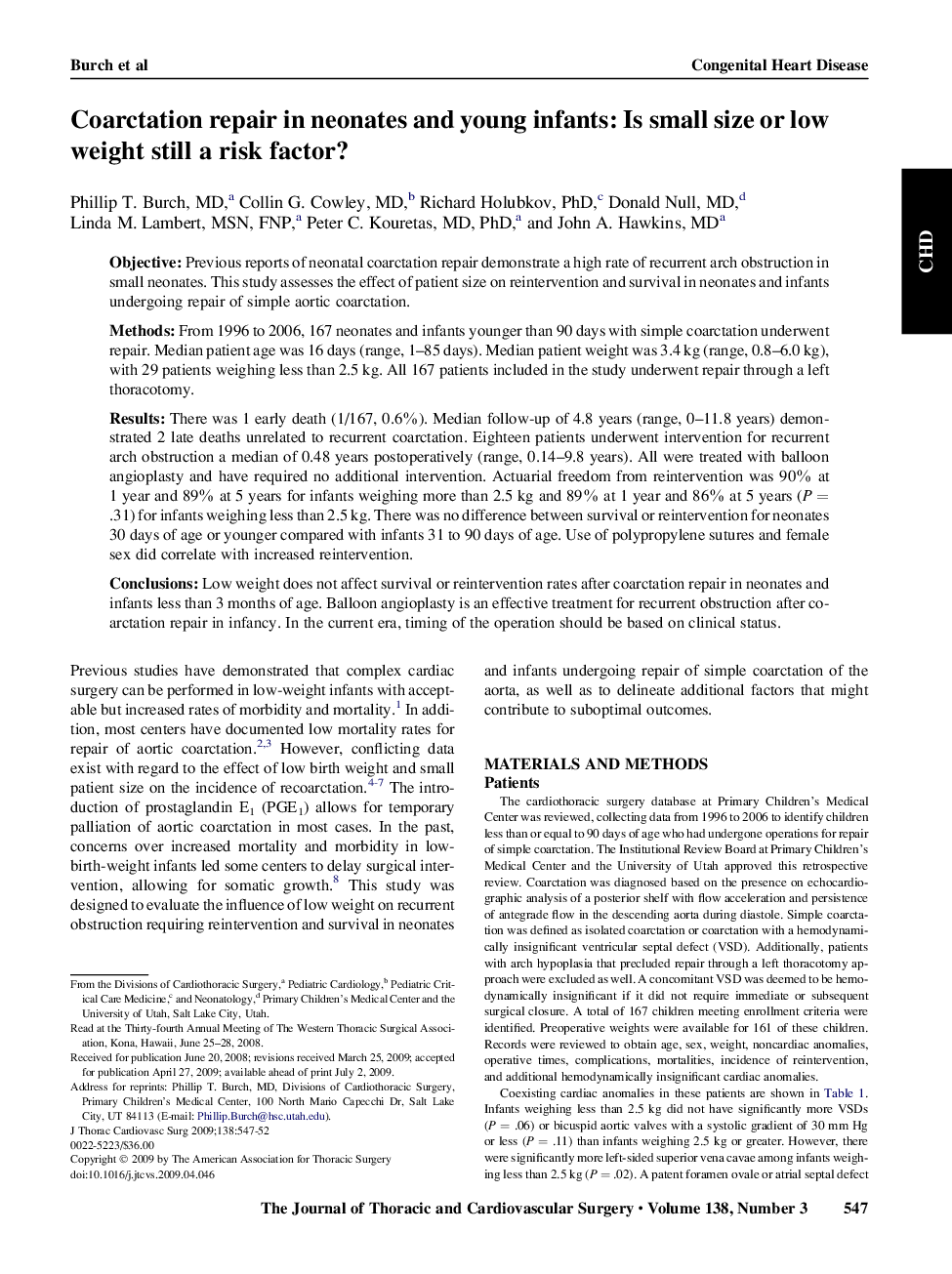| Article ID | Journal | Published Year | Pages | File Type |
|---|---|---|---|---|
| 2985549 | The Journal of Thoracic and Cardiovascular Surgery | 2009 | 6 Pages |
ObjectivePrevious reports of neonatal coarctation repair demonstrate a high rate of recurrent arch obstruction in small neonates. This study assesses the effect of patient size on reintervention and survival in neonates and infants undergoing repair of simple aortic coarctation.MethodsFrom 1996 to 2006, 167 neonates and infants younger than 90 days with simple coarctation underwent repair. Median patient age was 16 days (range, 1–85 days). Median patient weight was 3.4 kg (range, 0.8–6.0 kg), with 29 patients weighing less than 2.5 kg. All 167 patients included in the study underwent repair through a left thoracotomy.ResultsThere was 1 early death (1/167, 0.6%). Median follow-up of 4.8 years (range, 0–11.8 years) demonstrated 2 late deaths unrelated to recurrent coarctation. Eighteen patients underwent intervention for recurrent arch obstruction a median of 0.48 years postoperatively (range, 0.14–9.8 years). All were treated with balloon angioplasty and have required no additional intervention. Actuarial freedom from reintervention was 90% at 1 year and 89% at 5 years for infants weighing more than 2.5 kg and 89% at 1 year and 86% at 5 years (P = .31) for infants weighing less than 2.5 kg. There was no difference between survival or reintervention for neonates 30 days of age or younger compared with infants 31 to 90 days of age. Use of polypropylene sutures and female sex did correlate with increased reintervention.ConclusionsLow weight does not affect survival or reintervention rates after coarctation repair in neonates and infants less than 3 months of age. Balloon angioplasty is an effective treatment for recurrent obstruction after coarctation repair in infancy. In the current era, timing of the operation should be based on clinical status.
